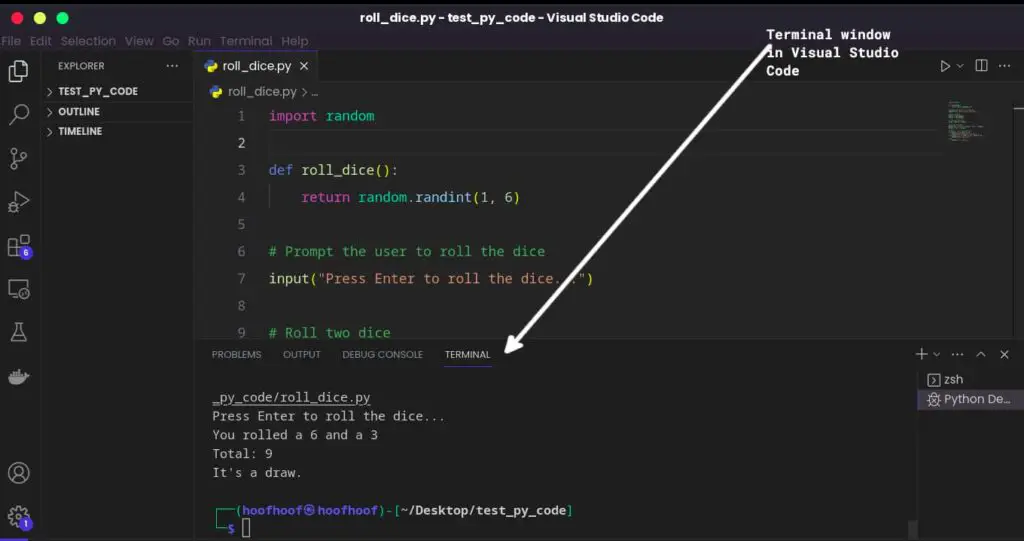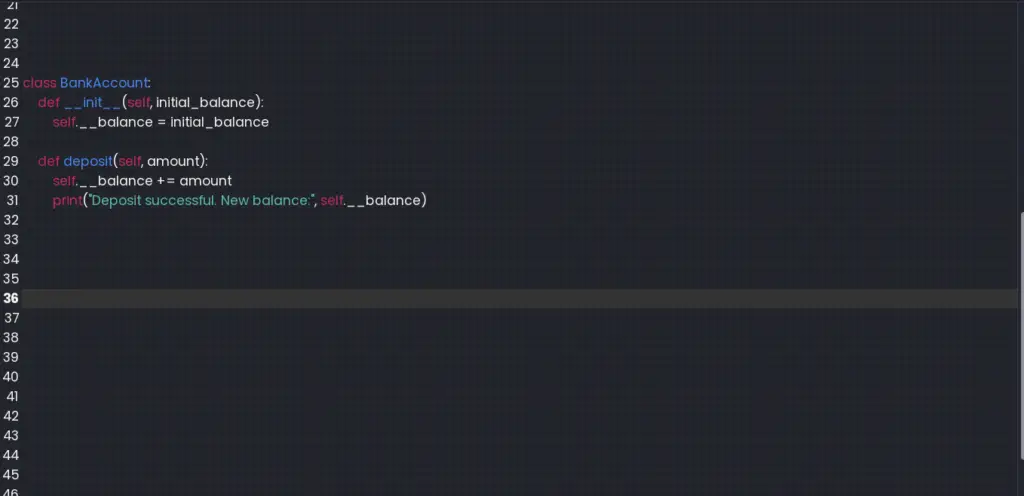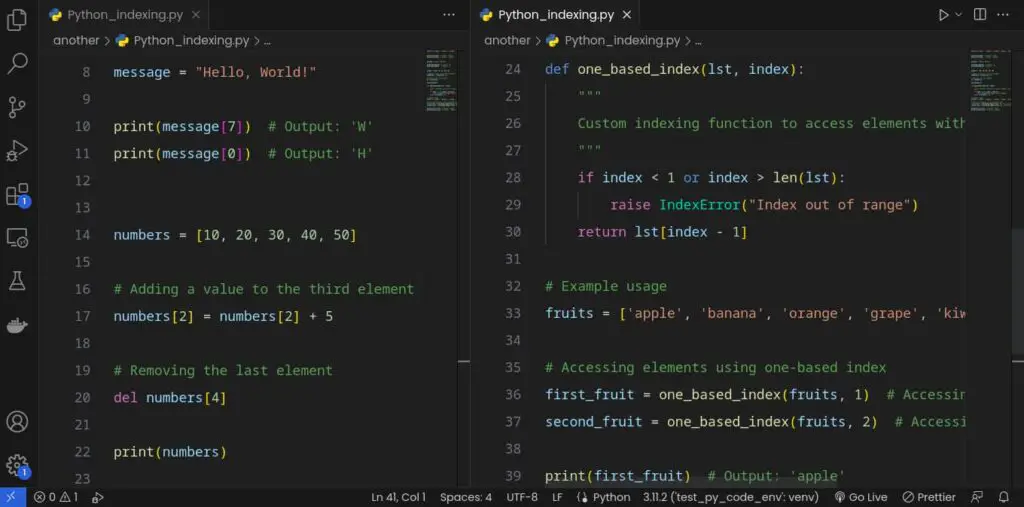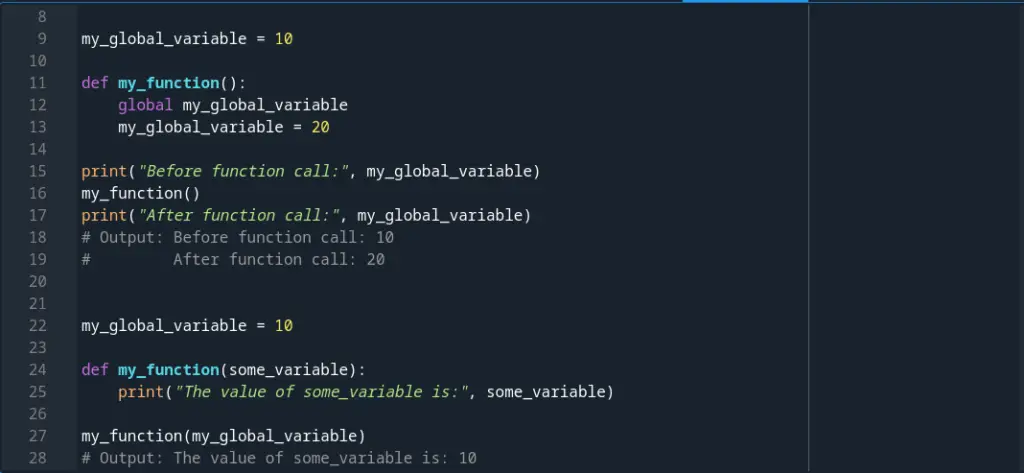In other programming languages, such as JavaScript, it is common to use the || (double pipe) operator to write logical statements that check if either of the compared items is true.
Whether the conditions match or not, the logical operator || returns a boolean value of True or False.
Logical operations are also fundamental in Python, forming the core of the language.
However, in Python, a different syntax is used to perform logical OR operations.
If you’re wondering whether you can use || in Python, then this article is here to provide you with the alternative approach.”
So,
Can you use || in Python?
You cannot use the “||” operator in Python for logical operations. If you include “||” in your code, Python will show a SyntaxError: invalid syntax. Instead, you should use the “or” operator for logical OR operations in Python. Python uses “or” instead of “||” for logical “or” operations.
When you’re starting out, you might wonder about the use of “||” in Python.
In certain programming languages, the “||” operator is used for logical operations.
However, in Python, the “||” syntax is not valid for performing logical AND evaluations.
Instead, Python utilizes a different syntax for logical operations.
For example, in languages like JavaScript or C, the “||” operator can be used for logical OR operations.
Here’s an example in JavaScript:
// JavaScript example
let x = true;
let y = false;
if (x || y) {
console.log("At least one condition is true");
} else {
console.log("Both conditions are false");
}
In the above JavaScript code, the logical OR operator “||” is used to combine the conditions. If either x or y is true, the code inside the if block will be executed.
In contrast, here’s how you would achieve the same logical OR operation in Python:
# Python example
x = True
y = False
if x or y:
print("At least one condition is true")
else:
print("Both conditions are false")
In Python, the keyword “or” is used instead of “||” to perform the logical OR operation.
The code snippet above demonstrates the correct usage of the logical OR operator in Python.
To show you, with an actual code, here is the error that Python throws whenever your try to use the || operator :
if (2 == 2) || (3 == 3):
print("All numbers are equal")My IDE already shows me an error when I try to use || in my code. The same happens when I execute my Python program:

Here’s the error message you’ll see if you try to use the “||” operator in Python:
SyntaxError: invalid syntax
Why is that?
This error occurs because the “||” operator is not recognized as valid syntax in Python. Python expects a different syntax for logical operations, so using “||” will result in a syntax error.
To perform the correct logical OR operation using the proper syntax in Python, you need to use the keyword “or.”
Unlike other programming languages, Python does not support the use of the “||” operator. Instead, you are required to utilize the “or” keyword.
Python’s design philosophy promotes readability and simplicity, favoring the use of keywords like “or” for logical OR operations.
So, remember to use “or” instead of “||” when writing logical OR operations in Python.
And…
Here’s how to use Python’s equivalent of || in a typical if statement for comparison:
The code below shows how to use OR in an if statement in Python.
if (2 == 2) or (3 == 3):
print("All numbers are equal")After using the correct syntax, my IDE indicates that there are no syntax errors in my code.
Additionally, when I execute the program, it produces the desired results without triggering any syntax errors as it did when I attempted to use the “||” operator.
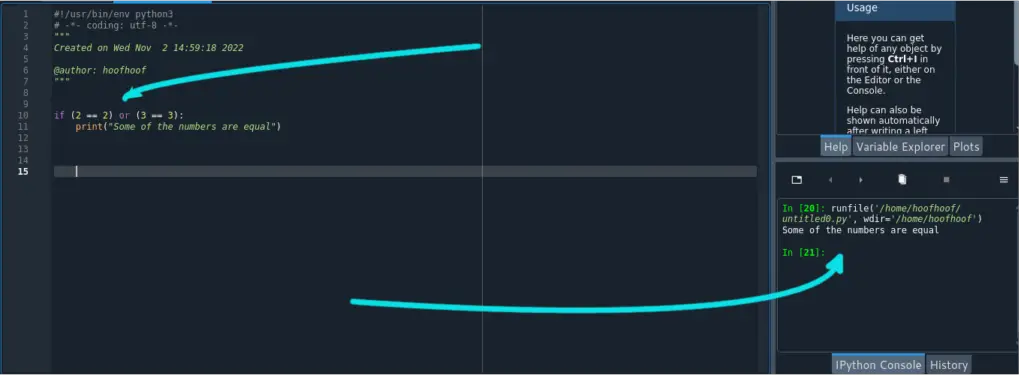
It can be confusing and very easy to mix up the syntax when you are simultaneously learning more than one programming language.
The “||” and “or” operators, used for logical OR operations, can easily be interchanged when working with both Python and JavaScript code concurrently.
But with time and practice, identifying these syntax errors should be pretty much easy as you write your code.
As you have seen, you only need to know that || is not a valid syntax in Python. Instead, the || operator is replaced by the ‘or’ keyword in Python.
Now that you know how to use the logical OR operator in Python, the questions that should probably be trailing your mind should be:
How to use multiple OR logical operators in Python?
In Python, you may encounter situations where you need to evaluate multiple conditions using the logical OR operator.
Understanding how to use multiple OR logical operators correctly can help you create flexible and expressive code.
When you need to evaluate multiple conditions using OR logical operators in a single statement, you can use parentheses to group the conditions together.
Here’s how you can accomplish this:
value = 5
if (value == 2) or (value == 3) or (value == 4):
print("The value is 2, 3, or 4.")
In the above example, we are checking if the variable value is equal to either 2, 3, or 4.
By enclosing each condition within parentheses and using the or operator, we create a single statement that evaluates to True if any of the conditions are satisfied.
You can extend this approach to include any number of OR logical operators in a single statement.
For instance:
number = 10
if (number == 5) or (number == 7) or (number == 9) or (number == 11):
print("The number is 5, 7, 9, or 11.")
In this case, the condition checks if the variable number matches any of the given values.
By grouping the conditions within parentheses and using the or operator between them, you can effectively evaluate multiple OR conditions in a single statement.
Remember to adjust the conditions and values according to your specific requirements.
In summary, here’s a step-by-step process for writing multiple OR conditions in Python:
- Identify the Conditions: Determine the conditions you want to evaluate using the OR logical operator. These conditions can be comparisons, variable checks, or any expression that results in a boolean value.
- Group the Conditions: Group the individual conditions within parentheses to define the scope of the OR operation. This ensures that the OR operator applies to all the conditions collectively.
- Use the OR Operator: Place the
orkeyword between each condition to create the OR logical operation. This signifies that at least one of the conditions must be true for the overall expression to evaluate toTrue. - Write the Code: Incorporate the grouped conditions and the OR operator into your code. You can use this within an
ifstatement, a loop, or any other context where you need to evaluate multiple OR conditions. - Execute the Code: Run your code and observe the results. If any of the conditions within the OR statement are true, the associated block of code will be executed.
Here’s another example that demonstrates the steps:
age = 25
if (age < 18) or (age == 21) or (age > 65):
print("You are either under 18, 21, or over 65.")
In this code snippet, we have three conditions grouped within parentheses and connected by the OR operator.
The message will be printed if any of the conditions are satisfied.
By following these steps, you can effectively write multiple OR conditions in Python and make your code more flexible in handling different scenarios.
And with such practice, you can always remember the right syntax to use when writing logical OR operators in Python: Using the keyword: “or” and not || (double pipe symbol).
For clarity, here’s
How to avoid confusion between || and OR in Python
When you’re learning multiple programming languages simultaneously, it’s easy to get caught up in the syntax and mix up certain operators.
One such case is the confusion between the “||” operator commonly used in languages like JavaScript and the “or” operator used in Python for logical OR operations.
To ensure clarity and avoid errors, it’s crucial to understand the distinction and use the appropriate operator when working with Python.
By following these guidelines, you can confidently use the correct syntax and improve your code’s readability and accuracy.
And what are the guidelines?
Understand the Difference: Recognize that the “||” operator is commonly used in languages like JavaScript, while Python employs the “or” operator for logical OR operations.
Be Mindful of Syntax: Be cautious when switching between Python and other languages to avoid mistakenly using “||” in Python. Remember that Python requires the “or” keyword for logical OR operations.
Practice with Examples: Familiarize yourself with examples that demonstrate the correct usage of the “or” operator in Python:
# Example 1
x = True
y = False
if x or y:
print("At least one condition is true")
else:
print("Both conditions are false")
# Example 2
a = 5
b = 10
result = a > 3 or b < 5
print(result) # Output: True
- Practicing a lot more to be familiar with writing logical-OR operations in Python
- Focusing on learning one programming language at a time if you are a beginner in all of the programming languages. The goal is to avoid syntax confusion across different programming languages, such as Python and JavaScript.
- Using a code editor such as Visual Studio Code or IDE such as Pycharm to write your code. An IDE or code editor will help you highlight your code’s syntax errors as you write.
By following these steps and staying mindful of the differences in syntax, you can avoid confusion and correctly utilize the logical OR operator in Python.
Related Questions
What is the difference between || and OR in Python?
The difference between || and OR in Python is that || is not a valid operator in Python, while OR is the correct syntax for performing logical OR operations. Use OR to combine conditions, whereas || is used in some other programming languages.
Conclusion
Understanding the distinction between || and OR in Python is crucial to writing correct and effective code.
Remember that || is not a valid operator in Python, and using OR is the correct syntax for logical OR operations.
By following the techniques and examples provided, you can confidently use multiple OR logical operators, avoid confusion, and create more robust and flexible code.
Continuously practicing and applying these concepts will enhance your programming skills and contribute to building reliable Python applications.
Create, inspire, repeat!

